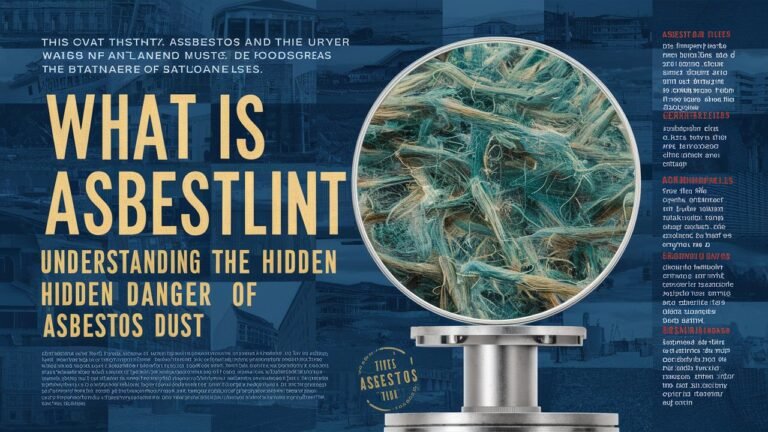Asbestlint—the term may sound obscure, but the threat it poses is anything but. Essentially, asbestlint refers to microscopic fibers and dust released from deteriorating asbestos-containing materials—think insulation, ceiling tiles, or old HVAC systems. These fibers are nearly invisible, float in the air for extended periods, and when inhaled, can lead to devastating health consequences, including asbestosis, mesothelioma, and lung cancer. In this article, we explore what asbestlint is, where it comes from, why it’s especially dangerous, and most importantly, how to stay safe.
What Is Asbestlint?
Asbestlint is composed of ultra-fine particles that emerge when asbestos-containing materials degrade or are disturbed. Though asbestos itself may be visible in bulk, asbestlint remains microscopic—akin to a fluffy dust cloud laden with needle-like fibers. This form is more insidious because it’s harder to detect and easier to inhale.
Sources and Formation
This hazardous dust is often generated by mechanical wear, renovations, or demolition in older constructions—particularly those built before the 1980s, when asbestos use was common. Industrial settings like boiler rooms, shipyards, and older factories are frequent hotspots, as is any site undergoing remodeling without prior asbestos checks.
Hidden Danger: Health Risks
Inhalation of asbestlint is particularly perilous due to its small size, allowing deep lung penetration. Symptoms often emerge decades after exposure, and even minimal contact can cause serious illnesses including asbestosis, mesothelioma, or lung cancer. Factors like smoking greatly amplify the risk, making awareness and prevention essential.
Detection Challenges & Safety Oversights
Standard air quality tests typically target visible particles and may miss these fine fibers. Detecting asbestlint requires advanced methodologies—like Transmission Electron Microscopy (TEM)—and highly specific protocols. Unfortunately, many safety regulations and workplace training programs neglect this invisible threat.
Prevention & Mitigation Strategies
To safeguard against asbestlint exposure:
-
Avoid disturbing materials unless properly tested.
-
Conduct specialized air testing (TEM recommended).
-
Use HEPA filters and appropriate PPE like N100 respirators.
-
Maintain wet-clean methods and install proper ventilation—especially in aging structures or during demolition.
Conclusion
Though little-known, asbestlint represents a silent danger, especially in older buildings or industrial environments. Its invisible nature doesn’t lessen its potency—rather, it increases the risk of long-term health consequences. Awareness, precision in detection, and proactive safety protocols are the best defenses. Whether you’re renovating a vintage property or managing an industrial site, taking asbestlint seriously can protect not just your health, but also those around you.
FAQ
1. What makes asbestlint more dangerous than regular asbestos fibers?
Asbestlint comprises ultrafine, airborne particles that remain suspended much longer and penetrate deeper into the lungs than bulk fibers.
2. Can standard air tests detect asbestlint?
No—typical air monitoring may overlook these delicate fibers. Advanced detection methods like TEM are often necessary.
3. Are there safe ways to manage asbestlint risks?
Yes—by avoiding disturbance of suspect materials, using specialized tests, employing proper PPE, and maintaining appropriate ventilation and cleaning protocols.
4. Who is most at risk of asbestlint exposure?
Individuals in older buildings, industrial settings, or involved in renovations without asbestos protocols are especially vulnerable
